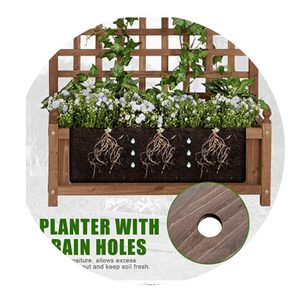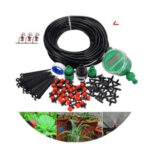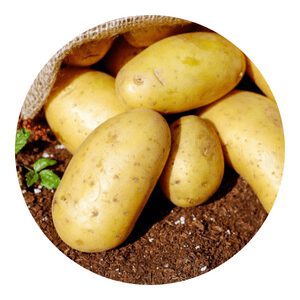How to grow organic sweet potato
Organic sweet potatoes are a delicious and nutritious option for your home garden. They are easy to grow, and can be grown in a variety of climates.
With a little planning and care, you can enjoy fresh, organic sweet potatoes all season long.
Here are some tips on how to grow organic sweet potatoes:
Table of Contents
Why grow organic sweet potatoes?
Organic sweet potatoes are not only delicious, but they are also nutritious and easy to grow.
Here are some reasons why you should consider growing organic sweet potatoes:
They are packed with nutrients. Sweet potatoes are a good source of fiber, vitamins A, C, and B6, and potassium. They also contain antioxidants that can help boost your immune system.
They are easy to grow. You don’t need a lot of space to grow sweet potatoes. They can be grown in containers or in the ground.
Sweet potatoes are also relatively low maintenance.
Once they are planted, you just need to water them and wait for them to grow.
They have a long harvest season. You can start harvesting sweet potatoes about 3-4 months after they are planted.
How to start growing organic sweet potatoes
Organic sweet potatoes are a healthier and tastier alternative to those grown with chemical fertilizers and pesticides.
They are also easy to grow, even for beginner gardeners.
Here are some tips on how to get started:
1. Choose the right variety of sweet potato for your climate. There are many different varieties, so do some research to find one that will do well in your area.
2. Start with healthy organic sweet potato plants or slips. You can buy these from a nursery or online retailer.
3. Plant the slips in well-drained soil in a sunny spot in your garden. Water regularly and mulch around the plants to help retain moisture.
4. Harvest your organic sweet potatoes when the skins turn brown and the flesh is soft. Store them in a cool, dry place until you’re ready to enjoy them!
Caring for your organic sweet potato plants
Organic sweet potatoes are a delicious and nutritious addition to any meal.
They are also easy to grow and care for. With a little time and effort, you can enjoy fresh, organic sweet potatoes from your own home.
To grow organic sweet potatoes, you will need to start with potato seeds or slips.
Once you have your seeds or slips, plant them in loose, well-drained soil in a sunny location. Water regularly and fertilize monthly with an all-purpose fertilizer.
Harvest your sweet potatoes when the leaves begin to yellow and die back.
This usually occurs in late summer or early fall. Carefully dig up the tubers and brush off any dirt.
Store in a cool, dark place until ready to eat.
With proper care, you can enjoy fresh, organic sweet potatoes from your own garden.
Harvesting your organic sweet potatoes
Organic sweet potatoes are a nutritious and delicious addition to any meal. They are easy to grow and harvest, and can be done so with just a few simple steps.
First, select a sunny spot in your garden that has well-drained soil.
Sweet potatoes do best when the soil is loose and sandy.
If your soil is clay-based, you can improve drainage by adding organic matter such as compost or peat moss.
Next, make sure you have enough space for your plants.
Sweet potatoes need room to spread out, so give them about 2 feet of space between each plant.
You can also grow them in raised beds or containers if you’re short on space.
Once your plants are in the ground, water them well and keep the soil moist throughout the growing season.
There's nothing quite like a home-grown sweet potato. Slipping in the mud, hands in the soil - it's a dirty job. But when you see those little sprouts peek through the ground, It's all worth it! These tuberous vegetables are relatively easy to grow, Just make sure they get enough sun and water. And in a few months time, you'll be enjoying Delicious, sweet potatoes straight from your own backyard!
Chappy The Gardener
Organic fertilizer for sweet potatoes
Organic fertilizer is key for sweet potatoes.
Sweet potatoes are a delicious and nutritious root vegetable. They’re a good source of fiber, vitamins, and minerals.
Sweet potatoes are relatively easy to grow, but they do need some specific care.
One of the most important things you can do for your sweet potatoes is to use organic fertilizer.
Organic fertilizer will help your sweet potatoes grow strong and healthy. It will also improve the flavor of your sweet potatoes.
If you’re looking for the best possible results, use compost or manure as your organic fertilizer.
You can also use commercial organic fertilizers, but be sure to read the labels carefully. Avoid any fertilizers that contain chemicals or synthetic ingredients.
Bone Meal
Organic sweet potatoes are a nutritious and delicious addition to any meal.
They are packed with vitamins and minerals, and their sweetness makes them a perfect dessert. But how do you grow organic sweet potatoes?
The first step is to find organic sweet potato plants. You can find these at most garden centers or online.
Once you have your plants, you need to prepare the soil. Sweet potatoes need well-drained, sandy soil to thrive.
To improve drainage, mix in some sand or compost before planting. You also need to make sure the soil is high in organic matter. This means adding manure or compost to the soil before planting.
Once the soil is ready, it’s time to plant your sweet potatoes. Plant them about 12 inches apart, and cover them with 2-3 inches of soil.
Kelp Meal
Organic sweet potato growers have long depended on kelp meal as an ideal organic fertilizer.
Kelp meal is a slow-release fertilizer that provides a steady supply of nutrients to plants over an extended period of time.
It is also rich in trace minerals and essential plant hormones that promote vigorous growth and bountiful yields.
Kelp meal is easy to apply and can be incorporated into the soil prior to planting or top-dressed around existing plants.
It is important to remember that kelp meal should be applied at half the recommended rate for other fertilizers, as it is very concentrated.
Sweet potatoes are a hearty crop that will thrive with regular applications of kelp meal organic fertilizer.
With its multitude of benefits, there is no reason not to give this natural product a try in your garden!
Compost
Organic sweet potatoes are a nutritious and delicious addition to any meal.
They are also easy to grow, and using compost as organic fertilizer will give them an extra boost.
Sweet potatoes are a root vegetable that is native to Central and South America.
They were first brought to Europe by Spanish explorers in the 16th century, and they have been grown in the United States since the early 1800s.
Sweet potatoes are a very versatile vegetable. They can be baked, mashed, fried, or even made into chips. Sweet potatoes are also a good source of vitamins A and C, as well as fiber.
Using compost as organic fertilizer for sweet potatoes is a great way to add nutrients to the soil. Compost is made from decaying organic matter, such as leaves, grass clippings, and kitchen scraps.
Manure
Organic sweet potatoes are a delicious and nutritious addition to any meal. They are also easy to grow, and using manure as an organic fertilizer is a great way to add nutrients to the soil.
Manure is an excellent source of nitrogen, phosphorus, and potassium, which are essential nutrients for plant growth. It also helps improve soil structure and drainage.
To use manure as an organic fertilizer, simply spread it around the base of the plants before watering.
Be sure to wear gloves when handling manure, as it can be quite smelly!
Mushroom Compost
Mushroom compost is an excellent organic fertilizer for sweet potatoes. It is high in nutrients and helps improve drainage and aeration in the soil.
Sweet potatoes are a relatively easy crop to grow, but they do require some care and attention.
Here are some tips on how to grow organic sweet potatoes using mushroom compost as your fertilizer.
When selecting a site for your sweet potatoes, make sure it is well-drained and has plenty of sunlight. The soil should be loose and rich in organic matter. Mushroom compost is a great way to add organic matter to the soil.
Sweet potatoes are a warm weather crop, so it is important to wait until the soil has warmed up before planting. You can plant seedlings or slips that have been started indoors.
Plant the slips about 12 inches apart in rows that are 3 feet apart.
What Month Do You Plant Sweet Potatoes?
Sweet potatoes are a delicious and nutritious addition to any meal. They’re also incredibly easy to grow, making them a great choice for anyone looking to start a garden.
The key to success is in knowing when to plant them.
For those in the northern hemisphere, the best time to plant sweet potatoes is in May.
This gives the plants plenty of time to grow and mature before the cooler weather sets in. In the southern hemisphere, September is the best month for planting sweet potatoes.
This allows the plants to grow during the warmer months and be harvested before the first frost.
No matter where you live, it’s important to pay attention to your local climate and make sure you plant your sweet potatoes at the right time. With a little planning, you’ll be rewarded with a bountiful harvest of these delicious tubers.
How Long Do Sweet Potatoes Take to Grow?
Organic sweet potatoes are a healthier and tastier alternative to regular potatoes. They are also very easy to grow.
Here is a guide on how to grow organic sweet potatoes.
Sweet potatoes are a warm-season crop that should be planted in late spring or early summer. They need about 90 days to mature.
To grow sweet potatoes, you will need a well-drained, sandy loam soil with a pH of 6.0-6.8. You can start them from seedlings or slips. Slips are young sweet potato plants that are grown from mature sweet potatoes.
To plant sweet potato slips, bury them in the ground so that only the top few leaves are showing.
Water them well and keep the soil moist until they have established themselves. Once they have started growing, you can back off on the watering somewhat.
Is it hard to grow sweet potatoes?
Growing sweet potatoes is not as hard as it may seem. With a little bit of preparation and care, you can grow your own sweet potatoes successfully.
Sweet potatoes are a warm-weather crop, so they need to be planted in late spring or early summer.
The soil should be loose and well-drained, and the plants should be spaced about 12 inches apart. Water the plants regularly, but do not overwater them.
When the sweet potatoes are ready to harvest, they will have large, deep-orange tubers.
To harvest them, gently dig around the plant with your hands and pull the potato up.
Be careful not to damage the tuber.
Rinse off any dirt and allow the sweet potato to dry before storing it in a cool, dark place.
Can I grow sweet potato from sweet potato?
You can grow sweet potatoes from sweet potatoes, but it is not as easy as growing them from seeds.
Sweet potatoes are a tropical plant and need warm weather to grow well. They also need loose, well-drained soil.
If you live in an area with cool winters, you can start your sweet potatoes indoors in pots about six weeks before the last frost date.
Once the weather warms up, you can transplant them into your garden.
How many sweet potatoes do you get from one plant?
If you’re looking to add a little sweetness to your gardening game, why not try growing organic sweet potatoes?
These delectable tubers are not only a treat for the taste buds, but they’re also relatively easy to grow.
So, how many sweet potatoes can you expect from one plant?
Generally speaking, you can expect to harvest about 5-10 pounds of sweet potatoes from one plant.
Of course, this will vary depending on the size and health of the plant.
If you’re looking to maximize your yield, be sure to give your sweet potato plants plenty of room to grow and provide them with consistent moisture throughout the growing season.
With a little TLC, you’ll be well on your way to harvesting a delicious crop of sweet potatoes in no time!
Health benefits of sweet potatoes
When it comes to sweet potatoes, the health benefits are hard to ignore.
This versatile root vegetable is packed with vitamins, minerals, and antioxidants that can support your health in a variety of ways.
For one, sweet potatoes are an excellent source of Vitamin A. This vitamin is essential for maintaining vision, immune function, and reproductive health.
Additionally, sweet potatoes are a good source of fiber. This nutrient helps promote regularity and can also help lower cholesterol levels.
Lastly, sweet potatoes are rich in antioxidants like beta-carotene. These nutrients scavenge harmful toxins and free radicals that can damage cells.
Antioxidants have been linked with a reduced risk of chronic diseases like heart disease and cancer.
Plant information:
Conditions for Organic Sweet Potato Growth:
Fertile soil
How to get sweet potatoes for organic growing:
Everywhere that sells vegetables
Watering conditions in sweet potato cultivation:
Medium watering
Light conditions in optimal condition for growing sweet potatoes:
Full sun
Recommended date for planting sweet potatoes:
Spring summer
Pests of the sweet potato plant:
worms
Date for pruning sweet potatoes:
All year round
Sweet potato pruning:
It is recommended not to prune the sweet potatoes just to remove leaves for use
Sweet potato plant size:
10-30 tubers, the plant 0.5-3 m.
Sweet potato growth rate:
Rapid growth.
You can grow sweet potatoes at home:
No
You can also grow sweet potatoes in a pot:
Yes
Flowering plant:
Sweet potato flowering date:
summer
The sweet potato powder is made by:
Bees
General information about the sweet potato flower:
Beautiful white-purple flowers that darken as you get closer to the yellow stamens.
Dilution of sweet potato blossoms:
It is recommended to dilute
Edible leaves:
Date of picking sweet potato leaves:
All year round
Proper pruning of sweet potatoes:
It is recommended not to touch the stem but only to remove young leaves
Sweet potato leaf information:
Leaves green, oval to purple depending on the variety, triangular in shape. Some leaves can have three to five ends, one of which is a pointed apex
Use of sweet potato owners:
Cooking and baking.
Edible roots:
Sweet potato root information:
Thickened roots with brown bark The inside is orange
Date of removal of the root from the soil in sweet potatoes:
Late autumn-early winter, under the right conditions is given all year round
Latin sweet potato:
Ipomoea batatas
Is it worth growing sweet potatoes:
You can grow sweet potatoes, in the seasons when sweet potatoes are expensive you will probably not have to eat, because this is not the right season to grow them, but the leaves are edible and therefore you can grow sweet potatoes for the leaves.
If you like sweet potatoes, it is recommended to grow:
In conclusion,organic sweet potatoes are a great way to start growing your own food.
They are easy to care for and can be grown in a variety of climates.
With a little effort, you can have a healthy and delicious crop of sweet potatoes to enjoy all year long.
Click To Grow
Helps Us Grow – Share If You Like

























